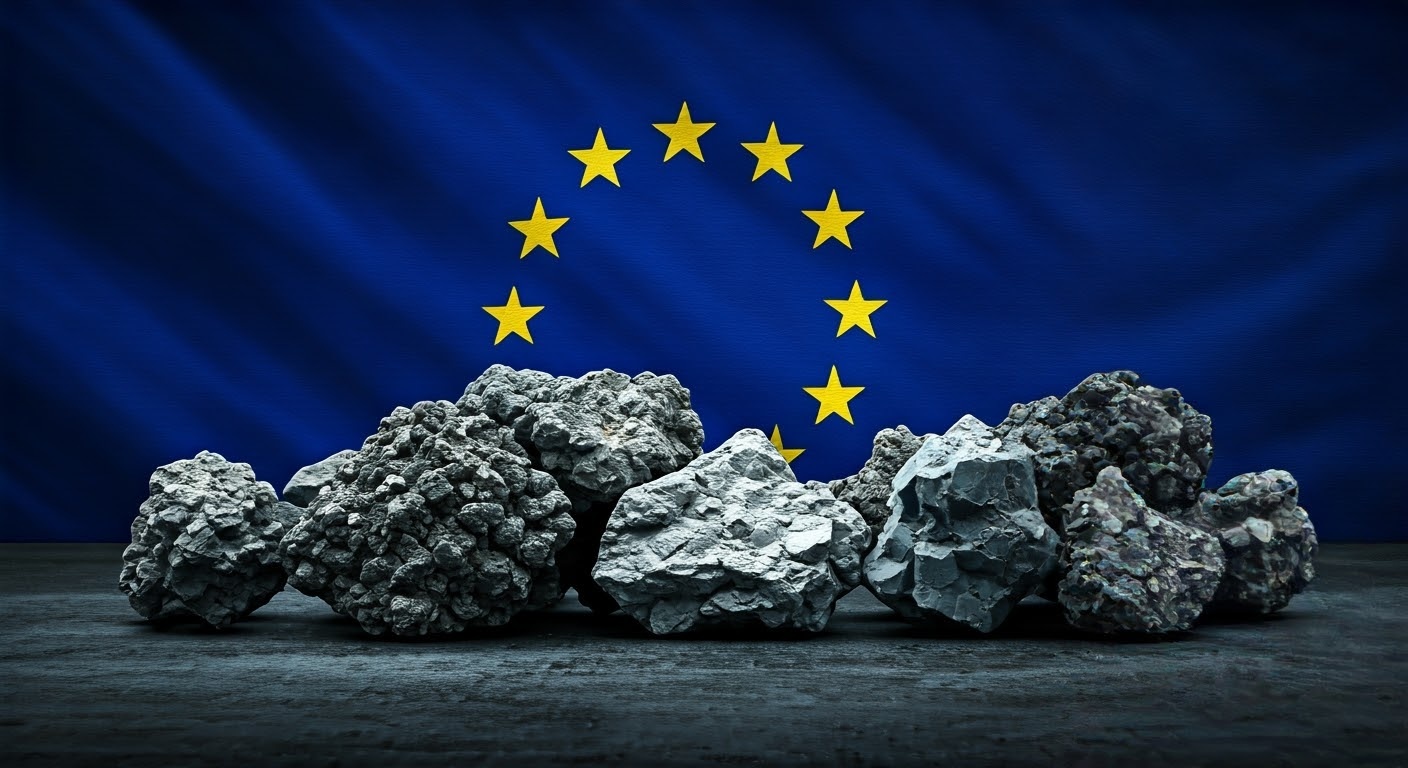Mining in Europe presents a unique set of challenges, from balancing the growing demand for raw materials with stringent climate goals to managing resource scarcity and shifting public perceptions.
By adopting sustainable practices, leveraging green technologies, and fostering community engagement, Europe’s mining sector can overcome these obstacles and contribute to a more resilient future.
Balancing raw material needs with EU climate goals
Europe’s mining industry must align with the EU’s ambitious climate targets while meeting the demand for essential raw materials.
Sustainable practices are at the forefront of this balancing act, with the adoption of a circular economy model proving vital.
This approach emphasises the recycling and reuse of materials, reducing the need for new resource extraction and fostering responsible consumption and production patterns.
Green mining technologies offer another solution, enhancing operational efficiency while minimising environmental impact.
Innovations such as autonomous vehicles, electric machinery, and advanced monitoring systems can significantly reduce the carbon footprint of mining operations.
Additionally, the shift towards renewable energy sources like solar, wind, and hydroelectric power for mining activities is crucial in reducing greenhouse gas emissions and aligning the industry with broader environmental goals.
Reducing Europe’s resource dependency
To decrease its dependency on external resources, Europe must focus on resource efficiency and diversification.
A circular economy approach, where resources are efficiently used, recycled, and repurposed, is essential to minimising waste and reducing the demand for new raw materials.
Eco-design, which prioritises minimal environmental impact throughout a product’s lifecycle, can further reduce resource consumption.
Recycling initiatives are also pivotal. By investing in cutting-edge recycling technologies and infrastructure, Europe can recover valuable materials from waste streams, lessening the reliance on primary raw material extraction.

Enhancing consumer participation in recycling programmes can boost resource recovery rates, contributing to a more sustainable resource management strategy.
Improving resource efficiency across various industries is another critical step. Embracing innovative technologies that optimise resource use, such as automation and digitalisation, can increase productivity while lowering material inputs.
Exploring alternative materials, including bio-based and recycled resources, will help diversify Europe’s resource pool and decrease dependence on finite resources.
Changing public perception
Altering public perception and reducing opposition to mining in Europe requires a comprehensive approach that addresses environmental, social, and economic concerns.
Effective community engagement is key, allowing mining companies to involve local residents in decision-making processes, address concerns, and integrate community needs into their operations.
Educational campaigns are also vital. By informing the public about the benefits of responsible mining practices, the technologies used to minimise environmental impact, and the economic contributions of the mining industry, companies can dispel common misconceptions.
Sustainability initiatives play a crucial role in shaping public perception. By implementing practices such as land reclamation, water conservation, and biodiversity protection, mining companies can demonstrate their commitment to environmental stewardship.
Dialogue forums provide a platform for stakeholders to express their views, ask questions, and engage in meaningful discussions with mining companies, fostering transparency and building trust.
Involving a diverse range of stakeholders, including environmental groups, local communities, and government bodies, in decision-making processes ensures that concerns are addressed from multiple perspectives. This inclusive approach can lead to mutually beneficial solutions and reduce opposition to mining activities.
EU regulations: A double-edged sword for Europe’s mining industry
The European Union’s regulatory framework profoundly influences the mining industry, acting as both a facilitator and a constraint.
These regulations are designed to ensure environmental protection, safety, and fair labour practices, aiming to promote sustainable mining practices across the region.
On the one hand, EU regulations enforce strict standards that drive the industry towards greener, more responsible operations.
This emphasis on sustainability aligns with broader climate goals and helps mitigate the environmental impacts of mining.
However, these stringent regulations can also increase compliance costs for companies, potentially hindering mining activities that struggle to meet the high environmental standards set by the EU.
Economic benefits are another consideration. While regulations are intended to stimulate local economies by promoting responsible mining practices and job creation, they can also limit the exploration and extraction of valuable mineral resources.
This tension between regulation and resource development poses a challenge to the industry’s economic potential.
Path forward for Europe’s mining landscape
Overcoming the challenges of mining in Europe requires a comprehensive strategy that integrates sustainable practices, resource efficiency, community engagement, and compliance with EU regulations.
By embracing green mining technologies, adopting a circular economy approach, and promoting renewable energy sources, the mining industry can reduce its environmental impact and contribute to the EU’s climate goals.
Proactive measures, such as investing in advanced recycling technologies and engaging local communities, will further support responsible mining practices, ensuring sustainable resource management for future generations.
With the right strategies, Europe’s mining sector can navigate its complex landscape and emerge as a model for sustainable development in the global mining industry.









